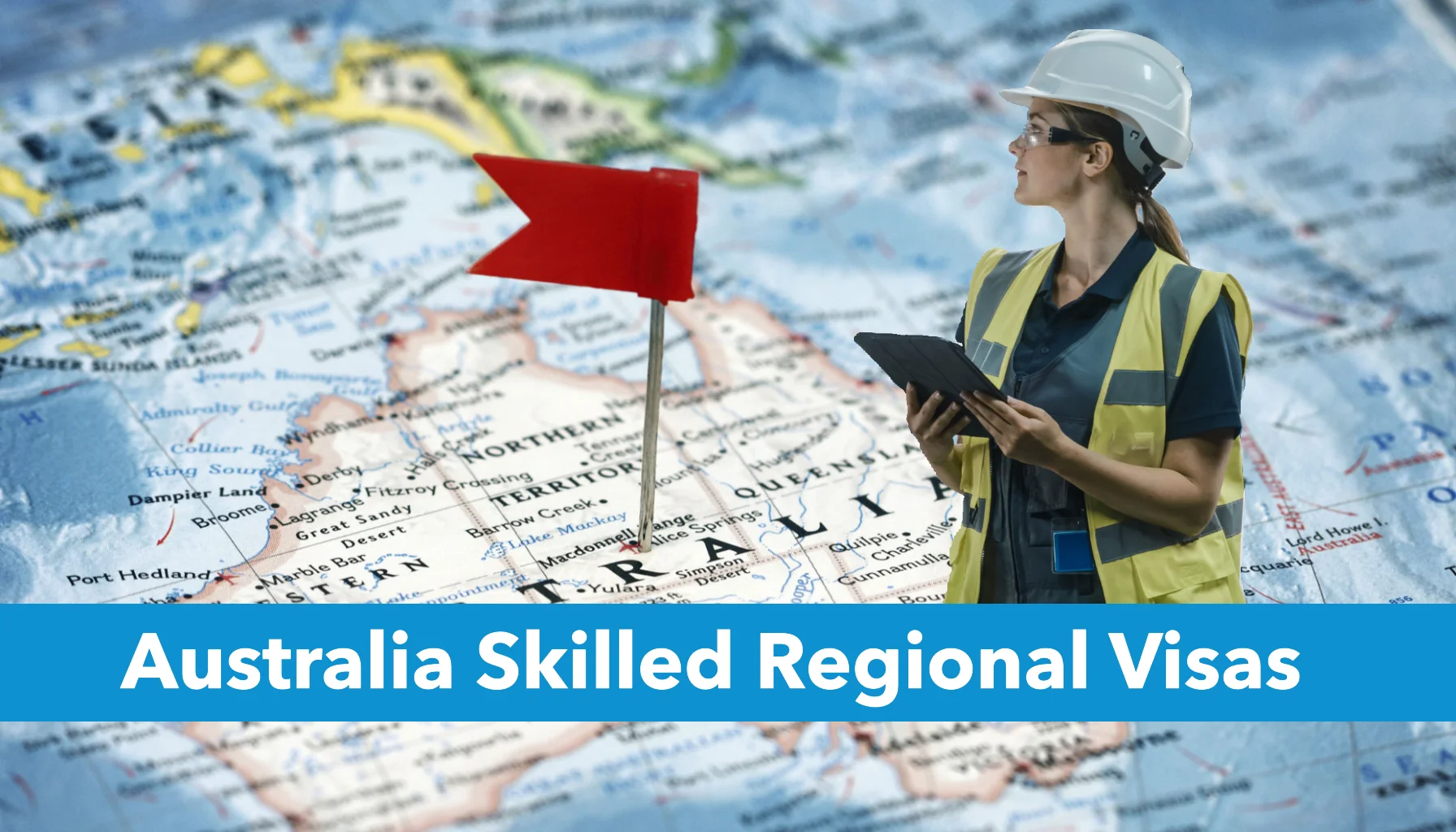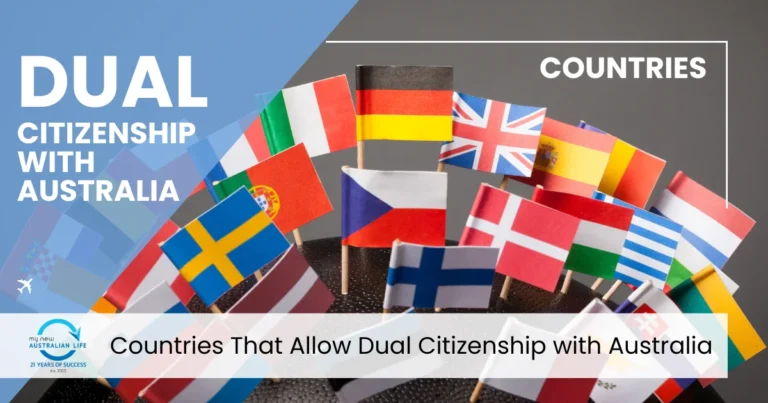Eligibility Criteria
To apply for a skilled regional visa, you must meet the following key requirements:
Occupation List
You must nominate an occupation from the Skilled Occupation List (SOL) or Regional Occupation List (ROL).
Points-Based Assessment (for Subclass 491)
The visa is points-tested. You’ll need to score at least 65 points on the points test based on factors such as age, English proficiency, work experience, and qualifications.
State or Family Sponsorship
You must either be nominated by an Australian state or territory government or sponsored by a family member living in a designated regional area (for Subclass 491).
Employer Sponsorship (for Subclass 494)
Your employer must be based in a regional area and be willing to sponsor you.
Also Read: State Sponsorship Visas in Australia: How They Work and the Pathways for Students
Application Process
| Steps | Details |
|---|---|
| Step 1: Check Eligibility | Ensure your occupation is on the SOL or ROL, check the points system, and determine if you need state nomination or family sponsorship. |
| Step 2: Expression of Interest | Submit an Expression of Interest (EOI) through the SkillSelect system. You’ll be ranked based on your points and preferences. |
| Step 3: State Nomination | If you’re applying for Subclass 491, you must seek nomination from a state or territory or obtain family sponsorship. |
| Step 4: Apply for Visa | Once invited, lodge your visa application with all supporting documents such as skills assessment, police clearance, and health checks. |
| Step 5: Wait for Decision | The processing time varies but can range from a few months to a year depending on the visa and application complexity. |
| Step 6: Travel to Regional Area | If granted, move to the regional area and comply with the visa conditions (e.g., living and working in a regional area for a certain period). |
Processing Times & Costs
| Visa Subclass | Processing Time | Cost (AUD) |
|---|---|---|
| Subclass 491 | 8 – 12 months | $4,640 |
| Subclass 494 | 10 – 15 months | $4,640 |
| Subclass 191 | N/A (Application opens 2022) | $385 |
Points Test System
To qualify for the Subclass 491 visa, you need to score at least 65 points. Here is a breakdown of how points are awarded:
| Criteria | Points |
|---|---|
| Age | Up to 30 |
| English Language | Up to 20 |
| Skilled Employment | Up to 20 |
| Educational Qualifications | Up to 20 |
| State/Territory Nomination | 15 |
| Other factors (e.g., partner skills) | Up to 10 |
Age-Based Points
| Age Range | Points |
|---|---|
| 18 – 24 | 25 |
| 25 – 32 | 30 |
| 33 – 39 | 25 |
| 40 – 44 | 15 |
English Language Proficiency Points
| Level | Points |
|---|---|
| Superior (IELTS 8.0) | 20 |
| Proficient (IELTS 7.0) | 10 |
| Competent (IELTS 6.0) | 0 |
Types of Skilled Regional Visas
Australia offers multiple types of skilled regional visas that allow individuals to live and work in specific regions. Here are the main options:
Subclass 491 – Skilled Work Regional (Provisional) Visa
For skilled workers who are nominated by a state or territory government or sponsored by an eligible family member in a designated regional area
Subclass 494 – Skilled Employer-Sponsored Regional (Provisional) Visa
For skilled workers who are sponsored by an employer in a regional area of Australia.
Subclass 191 – Permanent Residence (Skilled Regional) Visa
For those who hold a Subclass 491 or 494 and have met the conditions to apply for permanent residency.
Also Read: New South Wales 190 Visa
Designated Regional Areas
Here is the designated regional areas for the Skilled Regional Visas:
- New South Wales (NSW): All of NSW except Sydney, Newcastle, and Wollongong.
- Victoria (VIC): All of Victoria except Melbourne.
- Queensland (QLD): All of Queensland except Brisbane and the Gold Coast.
- Western Australia (WA): All of WA except Perth.
- South Australia (SA): Entire state.
- Tasmania (TAS): Entire state.
- Australian Capital Territory (ACT): Entire territory.
- Northern Territory (NT): Entire territory.
Note: All of Australia, except Sydney, Melbourne, and Brisbane, is considered regional.
Also Read: Is Australia Sponsoring People to Move on there Any City?
How to Increase Your Points
Here are some tips to improve your score:
- Improve English Skills: Scoring higher on the IELTS or other approved English tests can give you up to 20 points.
- Work Experience: Ensure your experience is counted and verified. Working in Australia on a temporary visa can also help boost points.
- Qualifications: Consider pursuing an additional degree or professional certification.
- Partner Skills: If your partner has skills in demand, you may get additional points for their qualifications.
Living in a Regional Area
Once your visa is approved, you’ll need to live and work in a regional area. Here’s a comparison of some popular regional locations:
| City | Population | Key Industries | Average Rent (AUD) |
|---|---|---|---|
| Adelaide | 1.3 million | Education, Manufacturing | $400/week |
| Hobart | 240,000 | Tourism, Healthcare | $350/week |
| Darwin | 150,000 | Mining, Energy | $450/week |
| Canberra | 450,000 | Government, Technology | $500/week |
Frequently Asked Questions
Can I bring my family?
Yes, both Subclass 491 and 494 visas allow you to bring family members.
Can I move between regions?
For Subclass 491, you must live and work in a designated regional area, but some flexibility exists depending on your visa conditions.
What happens after my visa expires?
You can apply for the Subclass 191 visa for permanent residency after meeting residency and work requirements.
Conclusion
Applying for a skilled regional visa in Australia can be a life-changing opportunity. By understanding the process, gathering the necessary documents, and maximizing your points, you’ll be on your way to securing a visa and starting your new life in one of Australia’s vibrant regional areas.






